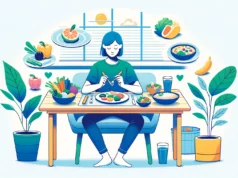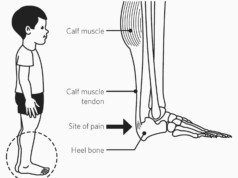Vision problems in children are more common than you many think. 1 in 5 preschoolers enrolled in Head Start have a vision problem and most are correctable, or at least treatable with glasses.
Most kids won’t complain that they can’t see, since blurry vision is all they’ve ever known, so it’s up to parents, teachers, and healthcare professionals to notice the signs a child is struggling to see and seek appropriate treatment.
Vision Problems in Kids
Nearsightedness, farsightedness, and astigmatism are the three most common vision problems. These issues never go away, but are easily corrected with glasses. Other vision problems, like lazy eye, can be improved by glasses but must be treated early for the best result.
Nearsightedness, or difficulty seeing things at a distance is the least common of these focus issues. Many children will begin to notice difficulty with distance vision when then can’t see the board in the classroom.
Parents might notice their child tends to sit very close to the television, or hold books too close to their face when reading. These are all signs that the child can’t see as well from far away.
Farsightedness, or difficulty seeing things close by is much more common. Children who are farsighted become frustrated when trying to read or work with small objects close up.
In very young children, difficulty seeing things nearby may affect their fine-motor abilities. Toddlers who consistently struggle to pick-up small objects or show little interest in puzzles and other close-up tasks may be struggling to see.
Astigmatism, or blurry vision can affect everything a child sees. If your child has astigmatism they may show more general signs of difficulty seeing: squinting, head tilting, or complaining of headaches and tiredness. If the child can see better in one eye than the other, they may even cover the weaker eye when trying to see better.
Regardless of if your child is showing symptoms, vision care is an essential part of their wellness. Any child who shows signs of poor vision, has a family history of vision problems, or is struggling to meet developmental milestones, should be examined for possible eye conditions.
Vision Testing for Young Children
Children are often unable to accurately take a vision test like an adult would, reading letters off of a wall chart. To make these “optotype” tests easier for young children, they might substitute shapes for the traditional letters, or ask the child to identify the direction a shape is pointing.
Regardless, this type of test isn’t recommended for children under 3 and may be more difficult for children from different cultures or language background.
Instead of eye charts, young children’s vision is often tested with devices that allow the optometrist to examine the health and structure of the eye. This method is precise enough to determine if the child has good vision, though it may not result in a perfect prescription.
Does your child need glasses?
To learn to spot the signs of a possible vision disorder in young children, read this infographic:













